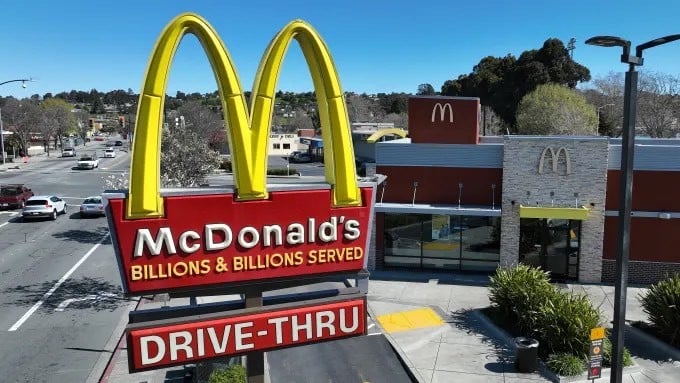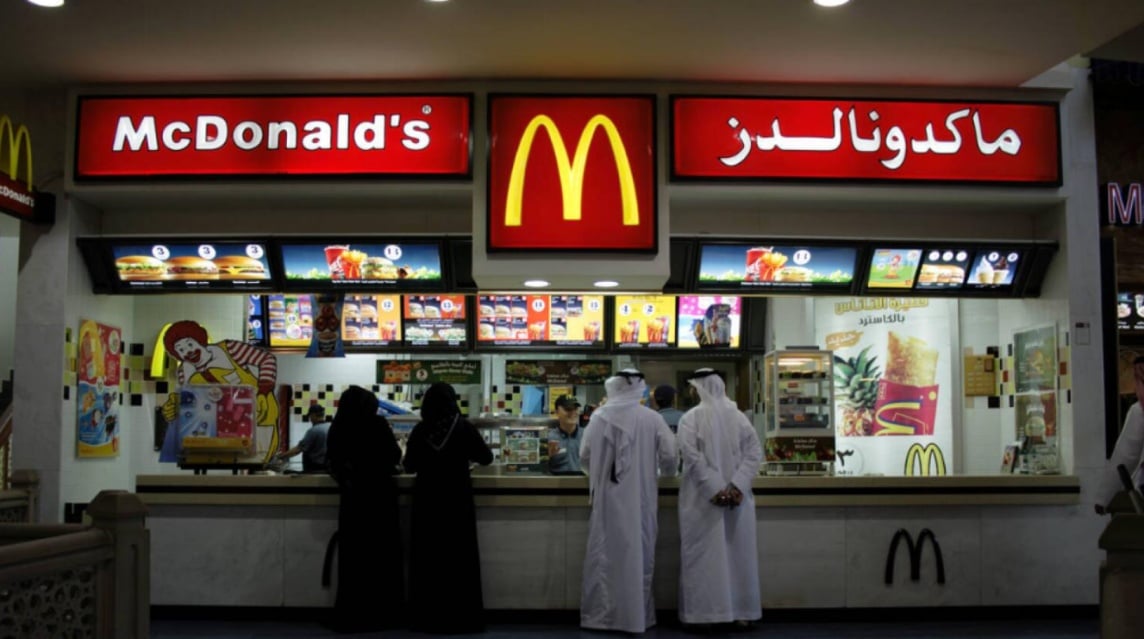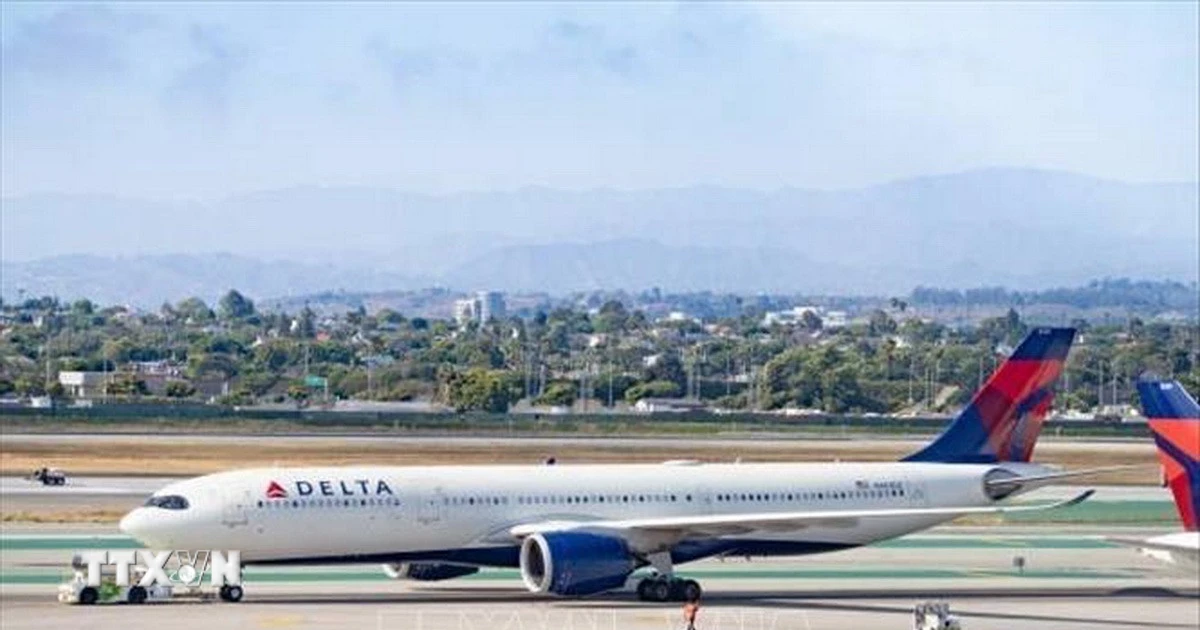Americans choose the "eat less, spend less" lifestyle amid price storms
CNN reported that at an investment conference on March 13 in the United States, some low-income Americans in the US chose to cook at home instead of going to McDonald's.
Many consumers are trying to manage inflation as interest rates rise and savings dwindle, said Ian Borden, McDonald's chief financial officer. Inflationary pressures have forced Americans to cut back on small luxuries. That includes their spending on food at fast-food restaurants like McDonald's, which have always considered affordability a core business value.
 |
| A McDonald's store on April 3 in San Pablo, California. (Source: CNN) |
The Wall Street Journal (WSJ) said that Americans have had to do everything to fight against the current increase in food prices, despite inflation being contained. After the information that food costs account for an unprecedented proportion of Americans' total disposable income since 1991, hundreds of readers sent feedback to WSJ, saying that they choose to cook at home instead of eating out during the current price storm. Since the late 2000s, Americans have spent more on dining out. However, starting in 2021, Americans have returned to cooking at home more than eating out, mainly due to the impact of the Covid-19 pandemic.
Inflation in the United States is at a 40-year high and has been slowing in recent months. However, grocery prices are rising rapidly. The cost of eating out in January 2024 increased 5.1% compared to the same month last year, while the cost of fresh food increased 1.2%, according to the US Department of Labor. Although inflation has stabilized from its 2022 high, prices for many items are still skyrocketing, with beef and sugar prices in the US breaking records in recent months.
Not only McDonald's, but also the discount chain Family Dollar, whose parent company said it would close nearly 1,000 stores on March 13. Company executives added that decades of high inflation had alienated customers, severely affecting the company's profits.
McDonald's raises prices to adapt and grow
American fast food giant McDonald's explained that it was no longer able to protect customers. With soaring costs due to rising inflation, it has affected the cost of production, energy, raw materials and wages of individual employees.
McDonald’s saw its U.S. traffic decline in the third quarter of last year as consumers felt the pressure of rising inflation and interest rates, with lower-income customers (those earning less than $45,000 a year), which once made up the bulk of its customer base, falling significantly.
McDonald's is also facing financial troubles internationally. Same-store sales in the Middle East have been hit hard by the months-long conflict between Israel and Hamas in the Gaza Strip. In its licensed markets, most of which are in the Middle East, sales rose just 0.7% in the quarter, compared with more than 4% growth in the United States and other international businesses.
 |
| One of 80 McDonald's stores in the United Arab Emirates in the Middle East. (Source: Khaleej Times) |
During the third-quarter earnings call, McDonald's CFO Ian Borden said the chain's revenue growth was driven by a surge of middle- and upper-income consumers who are switching from expensive restaurants to fast-food chains like McDonald's. He added that the company expects to raise menu prices by about 10% through 2024. In fact, in the U.S., a Big Mac — the company's signature dish — cost $5.58 in June, up nearly 16% from $4.82 a year earlier, according to the Big Mac Index.
Ian Borden said a big part of McDonald's is its drive-thru service, where customers can stay in their cars, drive through a delivery window, pick up their food, and drive away. Some consumers are choosing to eat at home more often, and to win back those customers, McDonald's is ramping up its drive-thru service, including deals priced at $4 or less at 90% of its U.S. stores.
 |
| Ian Borden, Chief Financial Officer of McDonald's. (Source: Reuters) |
McDonald's realized it had to change if it didn't want to be left behind. In early 2023, the company spent $300 million to buy Dynamic Yield artificial intelligence technology, which is used in more than 8,000 drive-thru systems. The technology uses data from each customer's purchases to suggest items they might like and allows the menu to change depending on the time of day. McDonald's aims to increase the value of its delivery business to $4 billion this year.
McDonald's has built a billion-dollar brand around the world by offering cheap food. But the definition of "cheap" is changing amid persistent inflation.
“We’re going to do what we need to do to maintain our leadership position. We have a lot of things that we can do to create value. It’s not just about price. It’s about creating a better experience for our customers, making sure they think of us when they make a choice,” McDonald’s CEO Chris J. Kempczinsk told CNN.
Source






































![[Photo] President Luong Cuong attends special political-artistic television show "Golden Opportunity"](https://vstatic.vietnam.vn/vietnam/resource/IMAGE/2025/8/22/44ca13c28fa7476796f9aa3618ff74c4)



































































Comment (0)